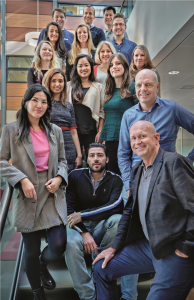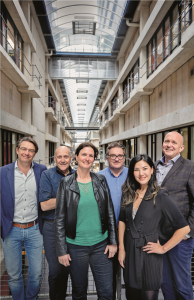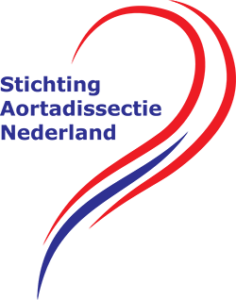PAREL-AAA: synergy between AMC and VUmc vascular surgery
Unraveling the pathophysiology of aortic aneurysms and updates of treatment through a multicenter joint data, image and bio-bank.
KAK KHEE YEUNG, RON BALM, WILLEM WISSELINK, MARK KOELEMAIJ, JAN BLANKENSTEIJN, VIVIAN DE WAARD, DINK LEGEMATE
 Introduction
Introduction
Abdominal aortic aneurysm (AAA) is a pathologic dilatation of the abdominal aorta. It is a widespread condition with ~5000 hospital admissions per year in the Netherlands. The natural course of AAA is to grow and rupture, which causes massive bleeding and is associated with a mortality rate of up to 80%. At present, the pathophysiology of aneurysmal disease is still unclear, limiting the ability to develop non-surgical treatments for prevention and/or stabilization of aneurysms. Various factors are implicated in the development of AAA pathology: lifestyle (including smoking), aging, atherosclerosis, biomechanical stress on the aortic wall (hypertension) as well as genetic factors.
To better understand AAA pathophysiology and its natural course, it is imperative to carry out research, which combines, genetic factors, biomarkers with longitudinal data and imaging markers.
AAA bank
A multicenter databank, biobank and image-bank has been established in the Netherlands: the ‘Parel Aneurysma van de Abdominale Aorta’ (The Pearl of Abdominal Aortic Aneurysm) (AAA-bank). The AAA-bank was created by the collaboration of the Amsterdam UMC (Academic Medical Center Amsterdam (AMC) and VU medical center (VUmc)) and Leiden University Medical Center (LUMC). All adults with AAA fitting the criteria will be included for as long as they are being treated by their vascular surgeon. At every patient contact, clinical data and imaging data are collected and stored in the central databank. Biomaterials are also collected during follow-up visits including blood for DNA and RNA, urine and AAA tissue; the latter is collected only if open surgical repair was performed. In addition to the AAA-bank, we also have a LIVE biobank of cultured smooth muscle cells, fibroblasts and live sectioned aortic tissues and a vibratome so that we can conduct stimulation in-vitro experiments.
Aims
1. To gain insight into the pathophysiology of AAA.
2. To gain more knowledge about the rupture risk of AAA.
3.To evaluate and improve treatment of patients with an AAA. Studies
Studies
The aorta is essentially a large muscular tube that transports blood to the organs. The medial layer is the thickest, consisting of vascular smooth muscle cells (SMC) and extracellular matrix (ECM). SMC can be either, contractile to sustain blood pressure or synthetic to produce ECM to preserve the structure of the aortic wall. One of our main basic-research lines is the study of the contractile and proliferative function of SMC. We relate the latter findings to rupture, aneurysm growth rate and genetic mutations. We are currently building 3D bio-engineered vessels with SMC and endothelial cells of AAA patients to investigate factors like shear stress, pressure, and to perform stimulation experiments with hormones and a number of different medications. Patient studies focusing on the outcome differences between genders are also being conducted. Another of the patient studies being carried out with the collected biomaterials is the ‘Predicting aneurysm growth and rupture with longitudinal biomarkers’ (PARIS) study. The PARIS study aims to determine the association between AAA progression and the evolution of serum levels of proteases and cytokines.
Together we are providing new insights into pathophysiology, which will eventually lead to effective medical therapies and prevention of aortic aneurysms and rupture.
Bron:
Jaarlijkse magazine Amsterdam Cardiovascular Sciences 2019
Fotografie: Digidaan


